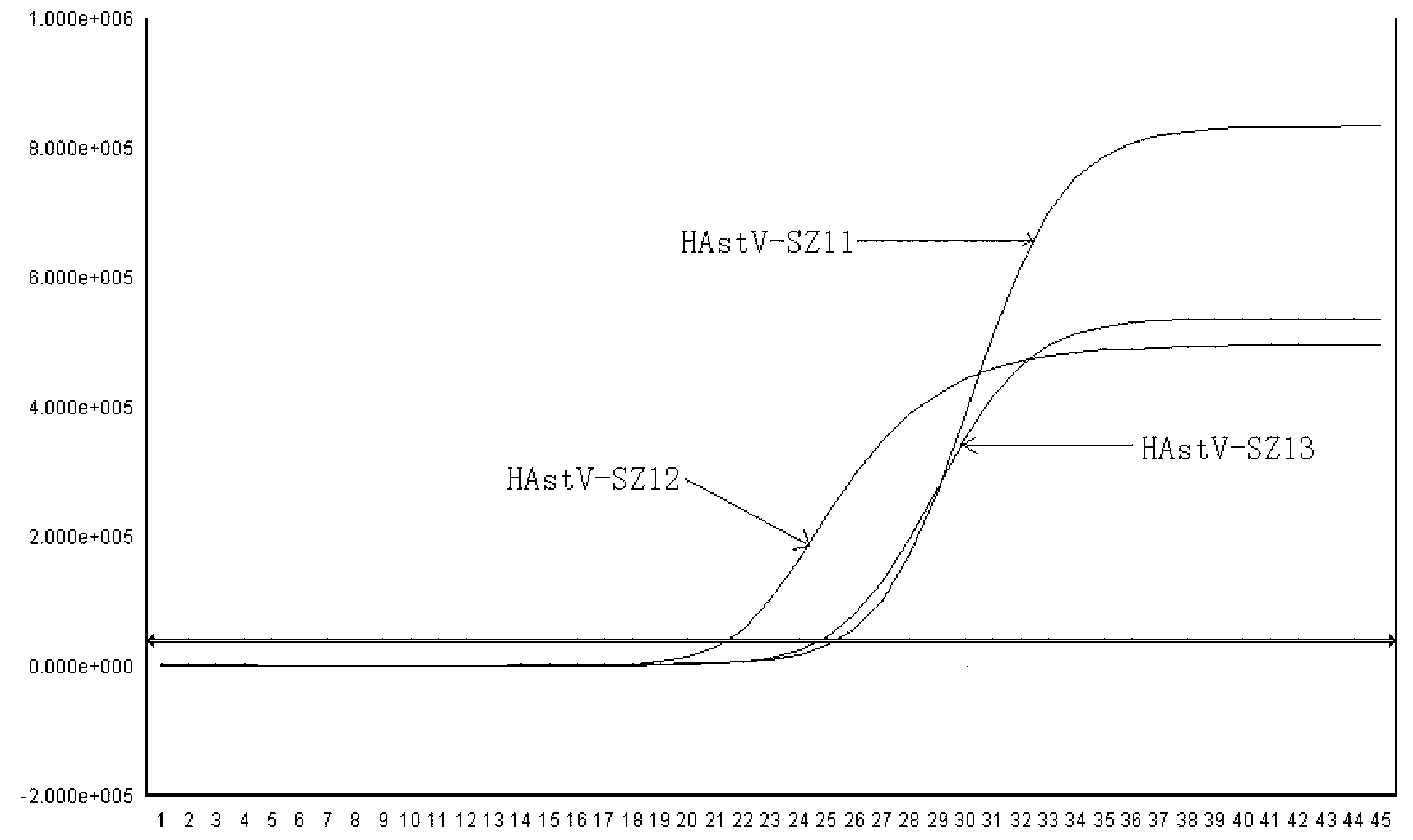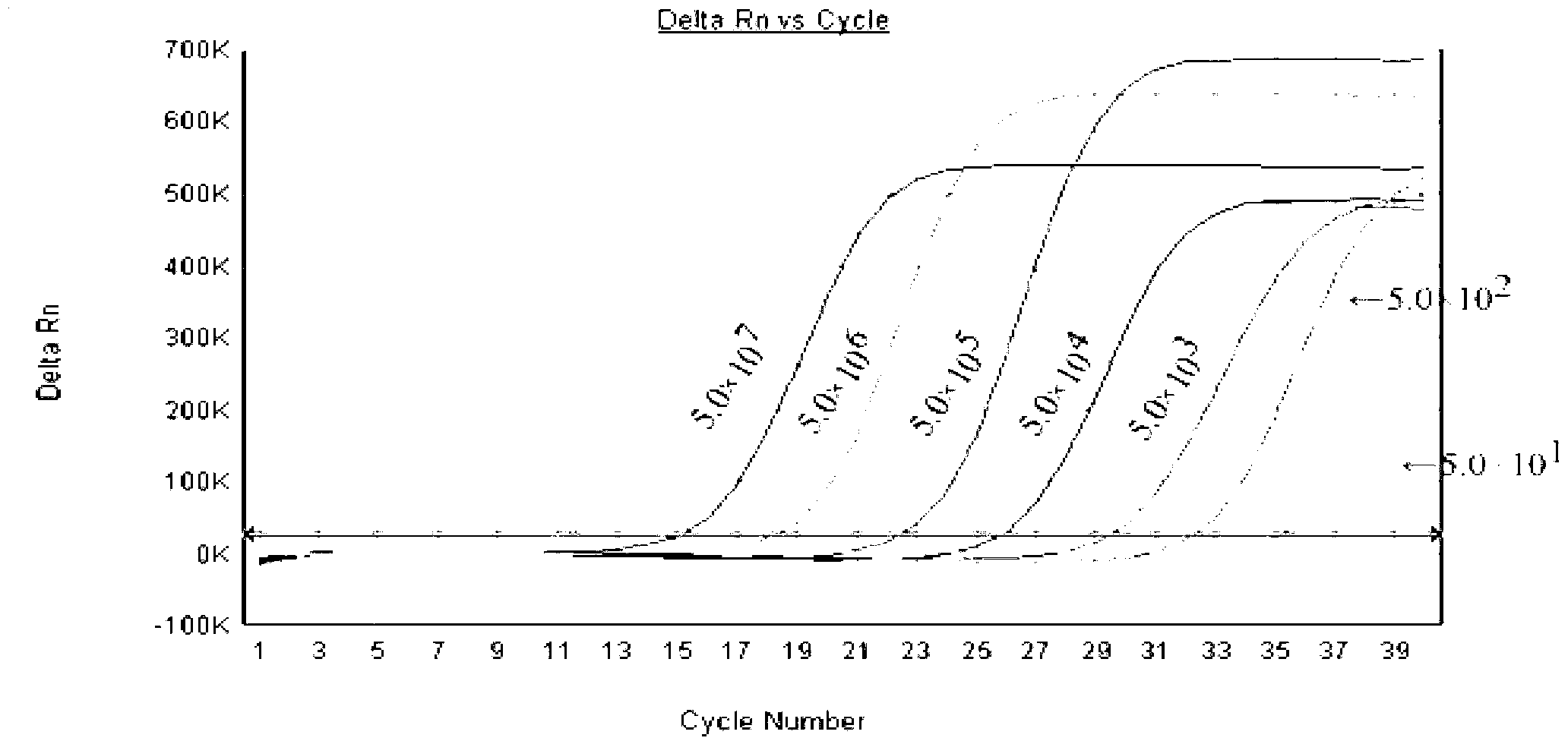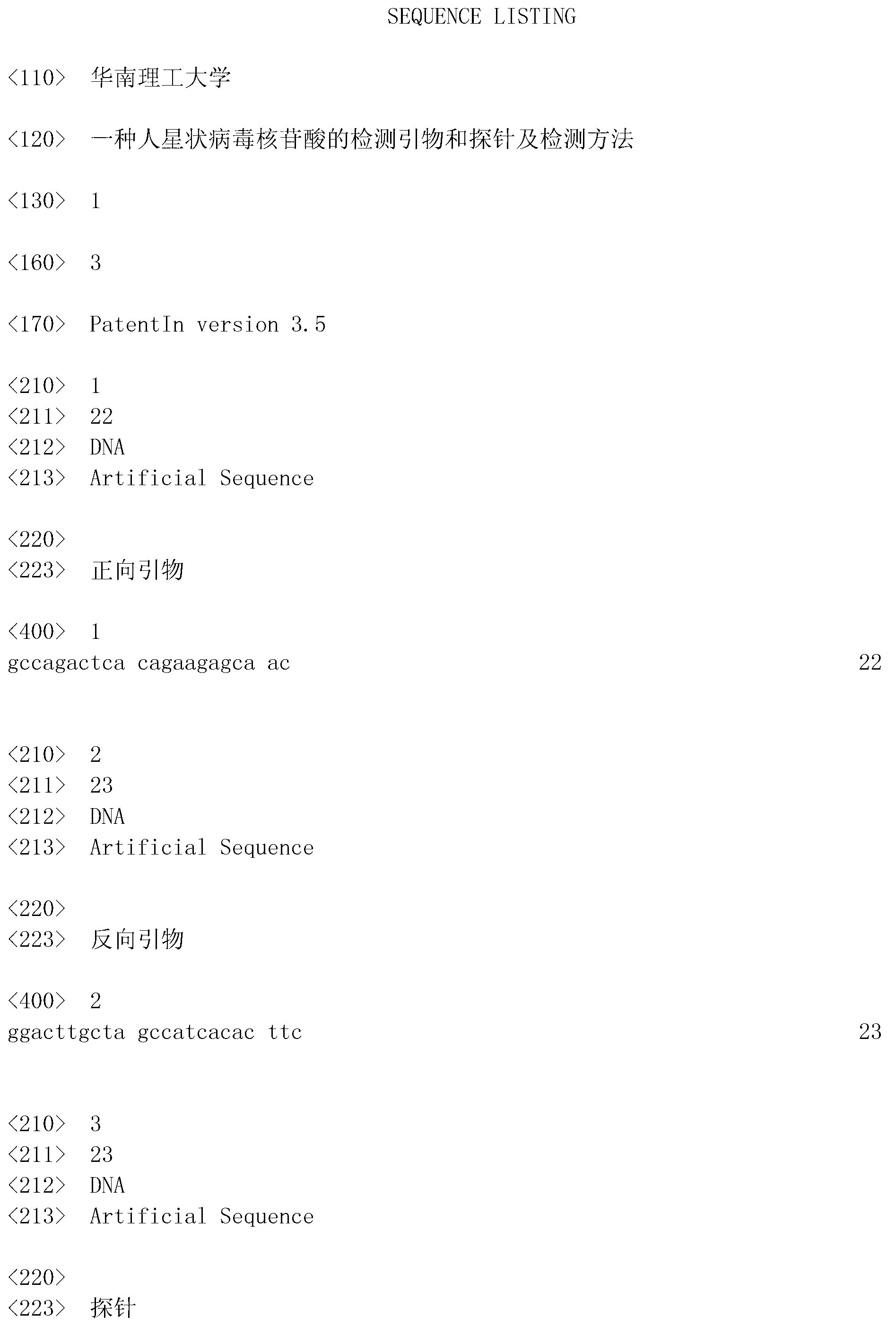Detection primer, probe and detection method of human astrovirus nucleotide
An astrovirus and primer detection technology, which is applied in biochemical equipment and methods, microorganism-based methods, and microbial determination/inspection, etc., can solve the problems of low virus sensitivity, easy missed detection, time-consuming and labor-intensive, etc. High, high accuracy, good primer specificity
- Summary
- Abstract
- Description
- Claims
- Application Information
AI Technical Summary
Problems solved by technology
Method used
Image
Examples
Embodiment 1
[0026] The design of embodiment 1 primer and probe
[0027] Download all known human astrovirus genome sequences from the NCBI database, and perform comparative analysis, select a segment with no secondary structure and a high degree of conservation, and design primers and probes. The sequences are as follows:
[0028] Forward primer: 5'-GCCAGACTCACAGAAGAGCAAC-3';
[0029] Reverse primer: 5'-GGACTTGCTAGCCATCACACTTC-3'.
[0030] The sequence of the probe is: 5'-CCTCCCCTCCAAATGCGATGGAG-3'; the 5' end of the probe is labeled with the reporter fluorescent dye VIC, and the 3' end is labeled with the quencher fluorescent dye BHQ2.
Embodiment 2
[0031] The optimization of embodiment 2 human astrovirus nucleic acid fluorescent RT-PCR conditions
[0032] The inactivated human astrovirus was used as the sample to be tested, and the viral genome RNA was extracted with a commercial RNA extraction kit, and stored at -20°C for later use.
[0033] (1) Optimization of primer concentration: under the same conditions in the reaction system, serially dilute the concentration of primers in Example 1 from 0.1 μmol / L to 1.6 μmol / L, and analyze and compare the test results , to determine the optimal final primer concentration of 0.4μmol / L.
[0034] (2) Optimization of magnesium ion concentration: under the same conditions in the reaction system, the MgCl 2 The concentration of the magnesium ion is increased by 1mmol / L from 1mmol / L to 10mmol / L, and the optimum concentration of magnesium ion is determined to be 5mmol / L.
[0035] (3) Optimization of the amount of reverse transcriptase (AMV RnaseXL): After comparing the test results us...
Embodiment 3
[0046] Example 3 Establishment of Real-time Fluorescent RT-PCR Detection Method for Human Astrovirus Nucleic Acid
[0047] (1) Preparation of the template to be tested: RNA extraction of virus samples was performed using a Roche High Pure viral RNA kit.
[0048] 1) Take 0.5 g of feces, add 500 μL of TE to make a 10-20% suspension, and centrifuge at 8000 rpm for 5 minutes;
[0049] 2) Take 200 μL sample supernatant and add 400 μL binding solution, mix well, add to purification filter tube, 1000rpm, 15s;
[0050] 3) Discard the filtrate, replace with a new collection tube, add 500 μL inhibitor removal buffer, and centrifuge at 10,000 rpm for 1 minute;
[0051] 4) Discard the filtrate, replace with a new collection tube, add 450 μL of washing solution, and centrifuge at 10,000 rpm for 1 minute;
[0052] 5) Rewash once; finally centrifuge at 13000rpm for 10s, discard the residual washing solution;
[0053] 6) Remove the collection tube, replace it with a clean 1.5mL Eppendrof c...
PUM
| Property | Measurement | Unit |
|---|---|---|
| diameter | aaaaa | aaaaa |
Abstract
Description
Claims
Application Information
 Login to View More
Login to View More - R&D
- Intellectual Property
- Life Sciences
- Materials
- Tech Scout
- Unparalleled Data Quality
- Higher Quality Content
- 60% Fewer Hallucinations
Browse by: Latest US Patents, China's latest patents, Technical Efficacy Thesaurus, Application Domain, Technology Topic, Popular Technical Reports.
© 2025 PatSnap. All rights reserved.Legal|Privacy policy|Modern Slavery Act Transparency Statement|Sitemap|About US| Contact US: help@patsnap.com



